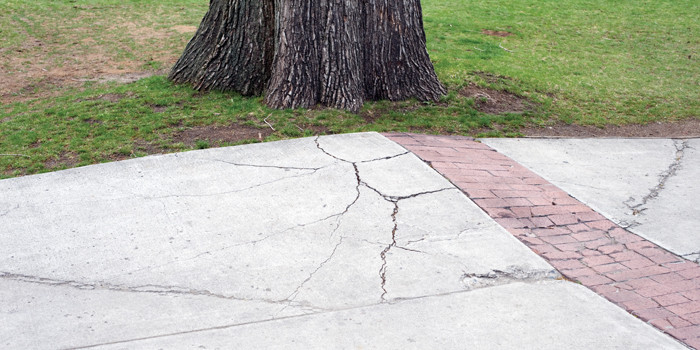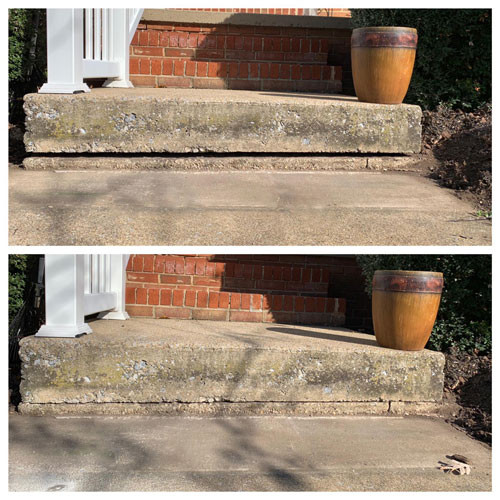Need a Lift


SPRAY FOAM MAGAZINE – Winter Issue 2019 –When it comes to repairing damaged concrete, concrete leveling has become an increasingly popular procedure throughout the industry. Chris Lenchyshyn, owner of Cold Country Spray Foam & Slab-Jack Kings, gave Spray Foam Magazine the rundown on the subtle art of concrete lifting. Concrete leveling, also known as slabjacking, has been used as a solution for broken concrete since the 1930s. A viable solution to replacing a slab of concrete, slabjacking addresses the root of the problem instead of simply pouring a new surface.
It takes precision and knowledge to execute the job properly. The range of training necessary to perform concrete leveling includes: understanding concrete construction, identifying different types of concrete, recognizing how concrete moves, as well as discerning which concrete can or cannot be lifted. There are certain techniques one needs to know in order to successfully lift slabs back up to proper positions without breaking or creating new major fractures or cracks in the slab. Having experience with concrete in general is a major plus when it comes to repairing and leveling concrete. Additionally, having the proper team of experts in the field is a must. If you are hiring a contractor, having a minimum of five years experience under residential commercial concrete lifting is certainly recommended.
Choosing the correct equipment is important as well in order to avoid making any errors. Both low-pressure and high-pressure polyurethane 1:1 proportioner systems can be used to lift concrete; this is very similar to equipment used for spray foam insulation. With residential work, like sidewalks and driveways, it is possible to get away with using low-pressure systems which are injected and mixed with a gun and static mixer system such as SPI’s LPG. As a project gets in to a much larger volume of concrete, expect a larger capability of work with a larger, per/lb machine such as a PMC PH2 or a Graco H30. If you have commercial work, make sure your contractor has the proper experience to take on larger lifts.
“With multiple injection points and multiple guns injecting, this creates less chance of breaking slabs and increases your chances of controlling a successful lift,” says Lenchyshyn.
Concrete leveling seems to be growing in popularity lately. According to Chris, “Concrete lifting using polyurethane is becoming more popular in my opinion based off the technology, hole sizes, down time, and warranty a contractor can provide a customer.” Smaller injection hole sizes range from 3/8" to 5/8" compared to 1-5/8" or sometimes even 2-5/8" injection holes used by mudjackers.

Top: BEFORE, Bottom: AFTER – Concrete leveling via injecting foam under the concrete uses much smaller and fewer holes, creating an arguably more-satisfying result. (Photos provided by Ken Wells, application by Elite Insulation & PolyPro LLC)
Chris explains, “Smaller and fewer holes create a drastically, more satisfying result after a slab has been lifted and patched. The capability of being able to provide different compressive strength systems, flow, and spread rates of foams, allows for more specifications on projects.” There are void fill and stabilization-only foam systems available which possess the capability to travel in a larger radius of the injection points rather than create lifts.
So how does concrete leveling measure up against the test of time? Honestly, it depends on a variety of factors. Lenchyshyn remarks, “In our own market, we compete against mudjackers who provide a two-year warranty. Whereas we provide a five to ten year warranty based on the project. Within the last seven years, we have had a one percent call-back ratio.”
As long as your contractor can provide a proper foam system density and compressive strength designed for the type of concrete you are lifting, it should work much better than old technology. Claiming something will stay effective permanently is not possible because you are relying on sub soils below the concrete to not move over time. Droughts, frost cycles, heavy rains, improper water management, floods, etc. can all lead to additional settlement. “Now that there are systems like ‘Deep Injection’ where we can stabilize the soils by grouting polyurethane four to 16 feet into the soil issues below concrete, we can ensure we are providing a proper method of repairing overburden or loose soils.”
Overall, slabjacking is more durable and longer-lasting than replacing an entirely new slab of concrete. Slabjacking is also quicker and more cost-effective than laying down fresh concrete. For these reasons, consider concrete leveling before you start your next project.
Disqus website name not provided.




































